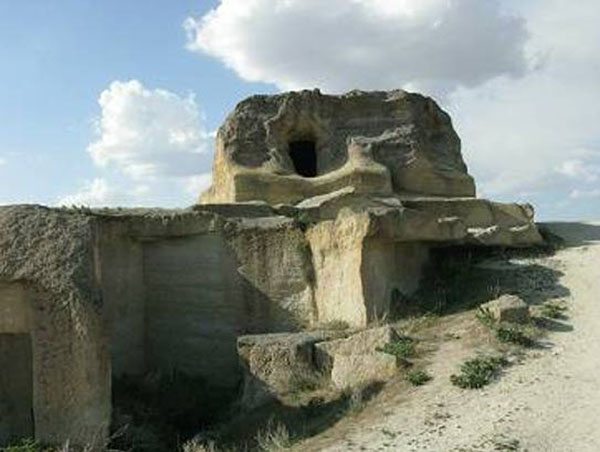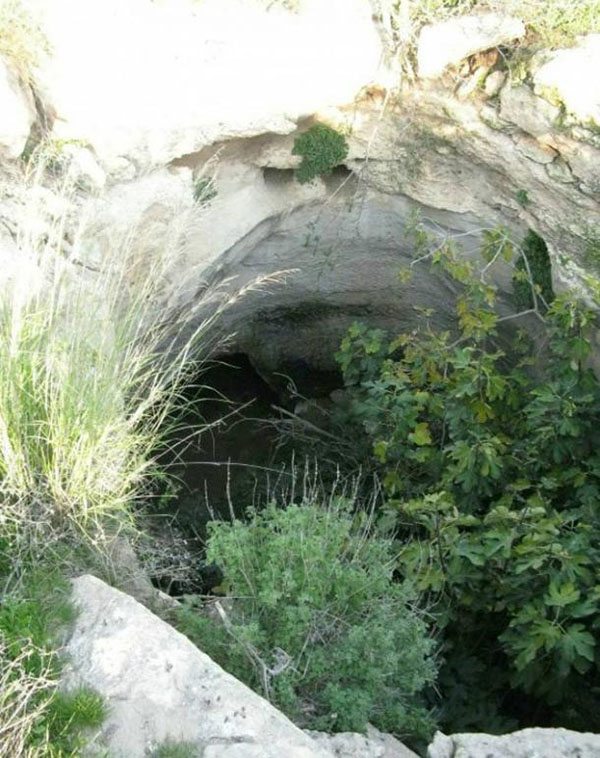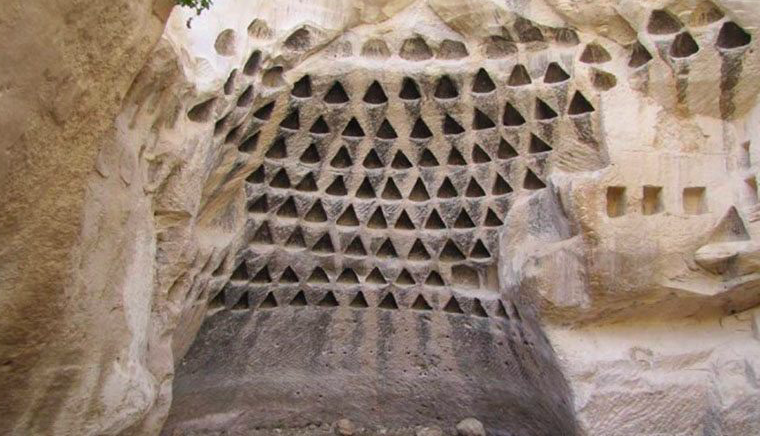Archaeologists digging in Israel have uncovered what appears to be an ancient underground complex that could be up to 1 million years old!
Most historians agree human civilization developed sometime around 10 to 12,000 years ago. Most ancient monuments and settlements fall neatly into that age period. But there are a number of findings that challenge this accepted view of human history. The latest of them comes from Israel, but one researcher believes it could be part of a much bigger underground complex spanning thousands of miles.
The site in question can be found in the Hurvat Burgin ruins in Adullam Grove Nature Reserve, located in central Israel. Many believe these ruins are a testament to human presence, activity and craftsmanship in a time where mainstream science tells us we barely knew fire.
Dr Alexander Koltypin specialized as a geologist and is now head of the Natural Science Research Center at Moscow’s International Independent University of Ecology and Politology. His credentials are high, his experience vast. So when he says that humanity might have a much older, richer history, we should lend him our ears.
After analyzing hundreds of ancient settlements and archaeological sites all around the Mediterranean, Turkey and the Middle East, Dr Koltypin concluded that these apparent disconnected sites share a number of striking similarities. This has made him suspect the ancient sites were once connected and part of a bigger civilization.

Part of the underground complex at Cavusin, Turkey
Additionally, the erosion of the materials used in the construction of these structures is a strong indication of their old age.
ACCORDING TO MY ESTIMATES, SUCH DEPTH OF EROSION … HARDLY COULD BE FORMED IN LESS TIME THAN 500,000 TO 1 MILLION YEARS,” DR KOLTYPIN WROTE ON HIS WEBSITE.
In his opinion, archaeological methods are somewhat flawed. When investigating a site, archaeologists usually look to nearby settlements to find a correlation between the accepted age of the ruins and the section they are currently studying. But this practice presents a problem: settlements were usually built on top of older ones, so the real age of the first establishment could be far greater than expected.
“When we examined the constructions … none of us never for a moment had a doubt that they are much older than the ruins of the Canaanite, Philistine, Hebraic, Roman, Byzantine, and other cities and settlements that are placed on it and around,” the archaeologist said.
You might have heard of the ancient underground city in Cappadocia, Turkey.
The underground city was discovered by Turkish construction workers during an urban development project. The massive subterranean city was unearthed when construction workers began digging the area in order to level the terrain for new buildings.
At first, archaeologists believed the city to be like Drinkuyu, another underground complex discovered in the area which served as a temporary shelter during raids. Özcan Çakır, an associate professor at the geophysics engineering department of the 18 March University initially believed that the broad tunnels were used as agricultural “highways” which offered people the possibility to carry food from once place to another, thus avoiding any dangers from the surface.
Koltypin believes this ancient site is part of a much larger complex that was built by an unknown civilization in times that far predate what we thought was the inception of organized human life.
In describing the ruins at Hurvat Burgin, Dr Koltypin expressed his belief that they are but a small part in a grand, ancient picture that spanned continents. And here we were thinking globalization is a recent phenomenon.
I WAS PERSONALLY CONVINCED ONCE AGAIN … THAT ALL THESE RECTANGULAR INDENTATIONS, MAN-MADE UNDERGROUND STRUCTURES, AND SCATTERED DEBRIS OF MEGALITHS WERE ONE UNDERGROUND-TERRESTRIAL MEGALITHIC COMPLEX WHICH WAS OPENED BY EROSION TO A DEPTH OF SEVERAL HUNDRED METERS.”
Another place of interest is Jernokleev site in Antalya, Turkey. He estimates this place to be man-made and anywhere from 500,000 to 1 million years old. While mainstream archaeology classifies this site as a Middle-Age settlement, Koltypin believes this is a gross underestimation of its actual age.
As proof for this statement, the archaeologist mentions the presence of ceramic fragments and constructions erected with volcanic basalt. The latest volcanic activity to provide the area with basaltic rock occurred 500,000 to 1 million years ago, hence the suggested age for the establishment.
What he identifies as a pink “cement” includes in it man-made ceramic fragments and basalts of volcanic origin among other materials. The last time an active volcano would have been present in the region to provide the basalts would have been some 500,000 to 1 million years ago.

Entrance to underground complex at Hurvat Burgin
Furthermore, many of the sites Koltypin studied show signs they were submerged underwater for long periods of time. Thick layers of silt deposits attest to the reality of this phenomenon.
Megalithic constructions found in many places in Europe and Asia share similarities in construction, materials used and layout, which led Koltypin to suggest they were once part of an enormous prehistoric complex:
THIS CIRCUMSTANCE GAVE ME A REASON TO CALL THE UNDERGROUND STRUCTURES AND GEOGRAPHICALLY RELATED RUINS OF CYCLOPEAN WALLS AND BUILDINGS AS A SINGLE UNDERGROUND-TERRESTRIAL MEGALITHIC COMPLEX,” KOLTYPIN STATED.
Discoveries such as this one point to one conclusion that accepted science finds difficult to swallow: there were others before us. The implications of this development are vast and could attest to the circularity and periodicity of human continuation. One wave after another comes crashing on the shores of existence, each civilization forgetting about the one that came before it.
As you are perfectly aware, history is flawed. Documents are written by man and subject to decay and willful destruction. We turn our eyes to stones and when their story contradicts what we know, do we turn to stones ourselves? Or do we accept alternative scenarios?
